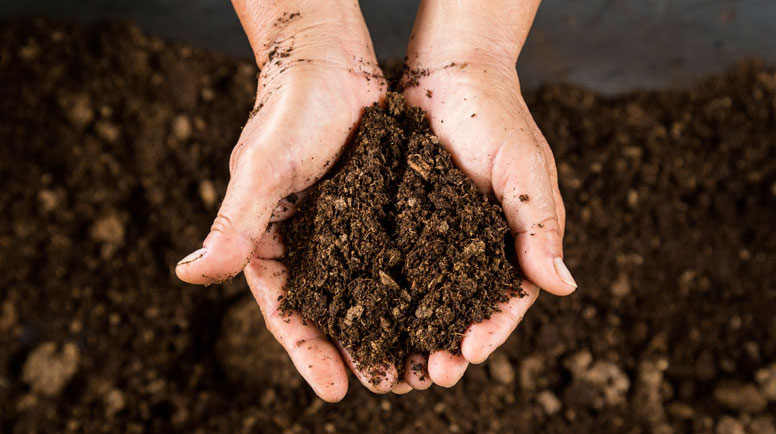In a world where soil is often taken for granted, have you ever wondered if there’s a secret sauce to growing bumper crops and supercharged vegetables? Well, wonder no more because we’re diving headfirst into the intriguing world of soil remineralization. Are you ready to unlock the hidden potential of your soil and revel in the joy of nutrient-rich harvests?
Picture this: you’re strolling through your garden, marveling at the lush, green foliage and plump, juicy tomatoes hanging from the vines. Your neighbor, who’s never quite had the same luck with their garden, asks for your secret. With a knowing smile, you lean in and whisper, “Soil remineralization.”
Their puzzled expression is priceless. But hey, who can blame them? Not everyone has discovered the transformative power of remineralizing their soil. It’s like giving your garden a spa day, complete with a mineral-rich mud mask.
As you continue to enjoy the bountiful harvests from your revitalized soil, you can’t help but chuckle at the thought of your neighbor Googling “soil remineralization benefits” late into the night. Your secret is safe, and your garden is thriving. It’s a hot take, but maybe, just maybe, your soil is the most fabulous plot in town.
More on this below. Keep reading.
In the quest for a healthier, more sustainable, and abundant food supply, soil remineralization emerges as a powerful and transformative practice. The concept of remineralizing soil might not be a household term, but it holds the potential to revolutionize agriculture and pave the way for a more organic and thriving future. In this article, we will delve into the intricacies of soil remineralization, its profound impact on crop yields and nutritional content, and how embracing this technique can position you as a steward of a regenerative and bountiful Earth.
Understanding Soil Remineralization
Soil remineralization, at its core, involves the process of replenishing essential minerals and nutrients in the soil. Over time, continuous farming, erosion, and agricultural practices have depleted the earth’s soils of vital elements that are crucial for plant growth. These depleted soils result in decreased crop yields, diminished nutritional value in our food, and heightened susceptibility to pests and diseases.
The Depletion Dilemma
Historically, agricultural practices have been oriented towards maximizing short-term gains. This often meant ignoring the long-term consequences of soil depletion. As a result, modern farming techniques, including the use of synthetic fertilizers and heavy machinery, have contributed to the steady decline in soil health.
Soil Health: The Bedrock of Agriculture
Before delving deeper into the remedy that soil remineralization provides, it’s essential to understand the pivotal role of soil health in agriculture. Healthy soil is not merely a passive medium in which plants grow; it’s a complex and dynamic ecosystem teeming with life. This living ecosystem comprises microorganisms, fungi, earthworms, and other critters that play vital roles in nutrient cycling and maintaining soil structure.
The Role of Minerals in Soil
Minerals serve as the building blocks of soil fertility. They are essential for plant growth, photosynthesis, and overall crop health. When minerals are lacking in the soil, plants struggle to thrive. This deficiency not only results in reduced crop yields but also compromises the nutritional quality of the harvest.
Restoring Balance through Remineralization
Soil remineralization offers a holistic approach to rectify the imbalance caused by decades of unsustainable agricultural practices. It involves the deliberate addition of mineral-rich amendments to the soil, rejuvenating its vitality. This process mirrors nature’s way of replenishing minerals through geological processes and volcanic eruptions.
Selecting the Right Minerals
Not all minerals are created equal when it comes to soil remineralization. We must choose the appropriate minerals that align with the specific deficiencies in the soil. Common remineralization agents include rock dust, crushed shells, and various mineral-rich composts. These materials release their minerals slowly, mimicking natural geological processes.
The Benefits of Soil Remineralization
So, why should you consider implementing soil remineralization on your agricultural land or in your garden? Here are some compelling reasons:
1. Enhanced Crop Yields
One of the most immediate and noticeable benefits of soil remineralization is a significant increase in crop yields. As the soil becomes more nutrient-rich, plants thrive, producing larger, healthier, and more abundant harvests.
2. Improved Nutritional Value
In an era where the nutritional content of our food is a growing concern, soil remineralization comes to the rescue. The increased mineral content in the soil translates to more nutritious crops. You can enjoy food that is not only tastier but also brimming with essential vitamins and minerals.
3. Reduced Dependency on Chemicals
Healthy, remineralized soil creates a natural defense mechanism against pests and diseases. This means you can reduce your reliance on chemical pesticides and herbicides, promoting a safer and more sustainable environment.
4. Environmental Sustainability
Embracing soil remineralization aligns with the principles of regenerative agriculture, which focuses on building soil health and minimizing environmental impact. By remineralizing your soil, you contribute to the restoration of ecosystems and the preservation of biodiversity.
Implementing Soil Remineralization
Now that you understand the profound benefits of soil remineralization, let’s explore how you can incorporate this practice into your agricultural endeavors:
1. Soil Testing
Begin by conducting a comprehensive soil test. This analysis will reveal the specific mineral deficiencies in your soil, enabling you to select the appropriate remineralization agents.
2. Choosing Amendments
Select high-quality remineralization amendments such as finely ground rock dust or mineral-rich compost. Ensure that the chosen materials align with your soil’s needs.
3. Application Techniques
Apply remineralization amendments evenly across your soil, following recommended application rates. This can be done manually or using specialized equipment, depending on the scale of your operation.
4. Monitoring and Maintenance
Regularly monitor your soil’s health and nutrient levels. Adjust remineralization practices as needed to maintain the optimal balance of minerals.
The Road Ahead
As we pave the way toward a more sustainable and abundant food supply, soil remineralization emerges as a crucial tool in the toolbox of regenerative agriculture. By revitalizing our soils with essential minerals, we not only boost crop yields and nutritional content but also contribute to the health of our planet.
In conclusion, embracing soil remineralization is a proactive step towards a brighter agricultural future. It’s a path that aligns with the principles of regenerative agriculture, environmental sustainability, and a more nourishing food supply for all. So, whether you are a seasoned farmer, a passionate gardener, or simply someone who cares about the quality of the food you consume, consider the transformative potential of soil remineralization. It’s a journey that can lead us to a more organic, revitalized, and abundant world.









